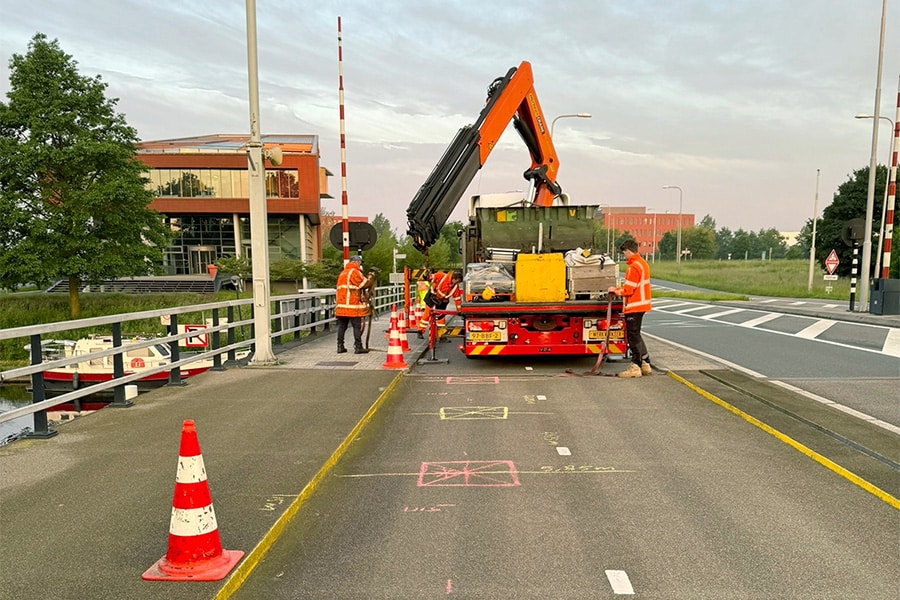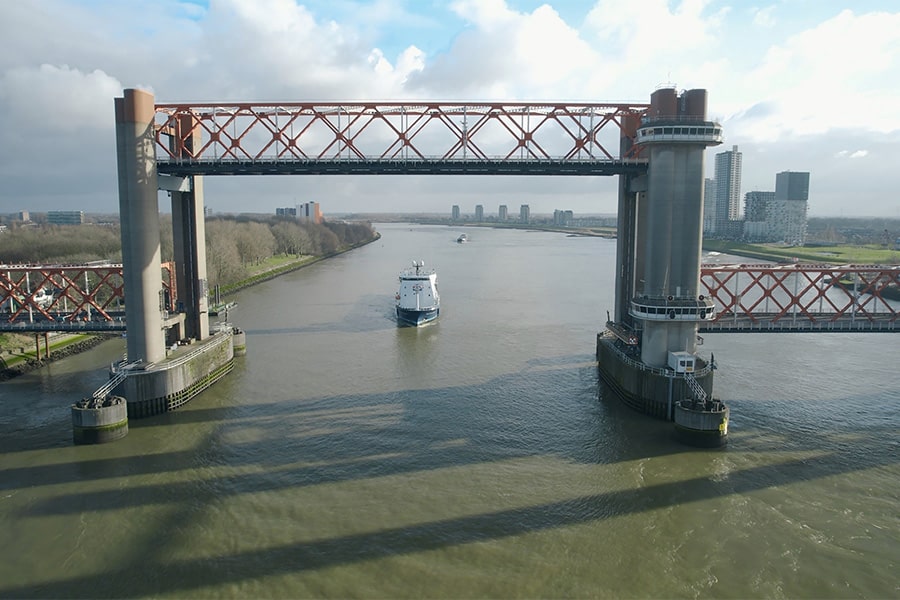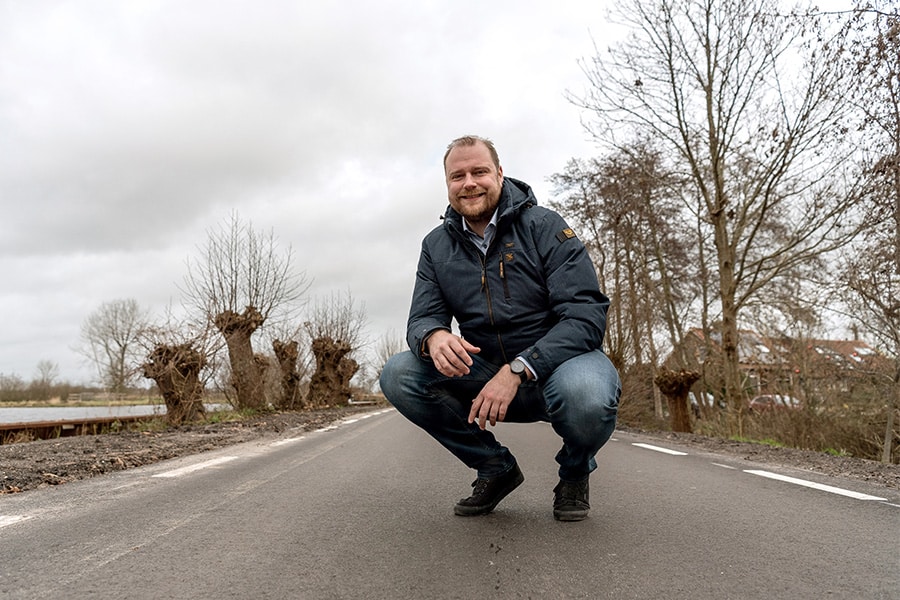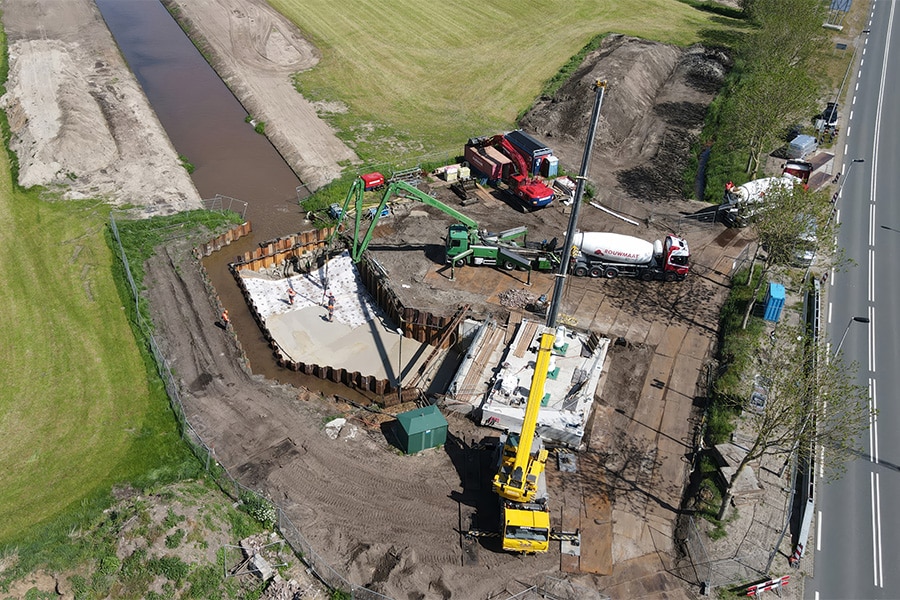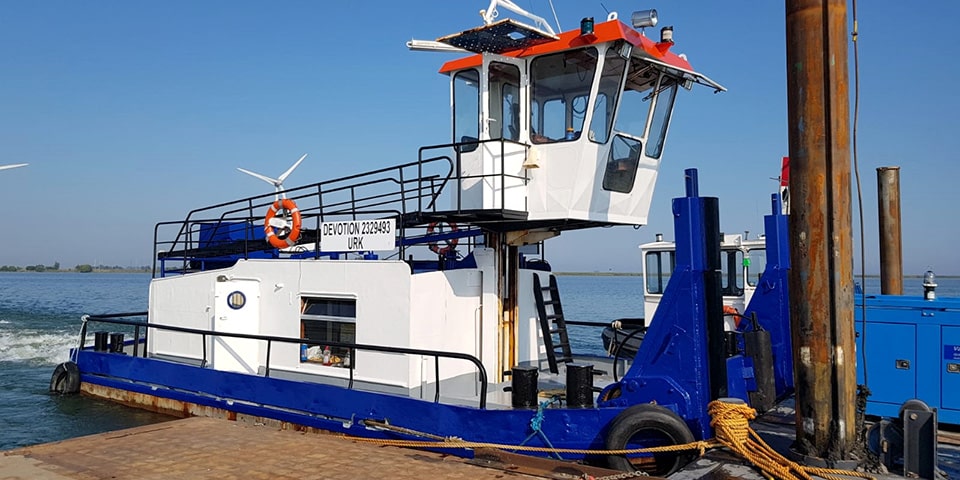
Unique and special: 800 meter long floating reed bed in the Krabbeplas near Vlaardingen
To improve the accessibility of the Rotterdam region, construction consortium BAAK is building the Blankenburg connection on behalf of the Department of Public Works. This is a new highway, the A24, connecting the A20 near Vlaardingen with the A15 near Rozenbrug. The new road connects to the A20 at Krabbeplas, west of Vlaardingen, with a sunken interchange. To construct the interchange, some of the reeds in the Krabbeplas must be removed. Because bats need the shelter of the reeds while hunting, an alternative had to be found. The company Van Aalsburg BV was asked to help think of a solution.
Traditional knowledge combined with modern working methods
At Van Aalsburg BV, an unusual willow or wickerwood business, the craft of wickerwork has been passed down from father to son(s). Meanwhile, the company has grown into a large and dynamic family business with six brothers. They are all go-getters. With a team of some sixty motivated specialists, Van Aalsburg is renowned in the Netherlands, but also abroad, for its knowledge and experience in the field of zinc pieces, drift fences and wattle fences. The wood is grown traditionally in the Biesbosch and sustainably at the company's own 150-hectare nursery. Traditional knowledge, modern machines and working methods go together perfectly at Van Aalsburg in a socially responsible way.
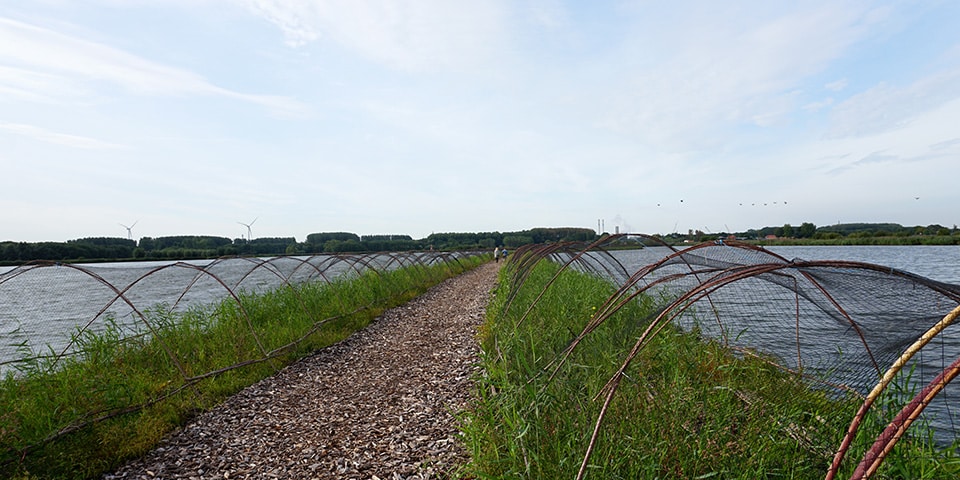
To prevent geese from eating the young reed plants, goose-feeding nets were installed with willow branches.
Floating cane field
Commissioned by BAAK, Van Aalsburg designed and realized a floating reed field no less than 800 meters long (bank to bank) and 10 meters wide. Dick van Aalsburg explains, "In fact, the floating reed bed is a derivative of the laying fields we patented. In this case, only the upper part of the laying field was used. The lee structure was made of willow branches on top of that. Recyclable PVC pipes were installed under the entire structure to keep the thatch bank afloat, and wooden stakes were used to anchor the thatch bank in its proper location. The one-meter by one-meter lattices of cribs incorporate released soil from this same project and are planted with reed cuttings. A two-meter-wide walking path with wood chips was installed in the middle. This allows walkers to cross the Krabbeplas." Van Aalsburg continues: "The beauty of our profession is not only the combination of old and new techniques, but also working in and with nature. For example, to prevent geese from eating the young reeds, nets have been installed with willow branches. This allows the geese to still land on the center aisle but not damage the young reeds."
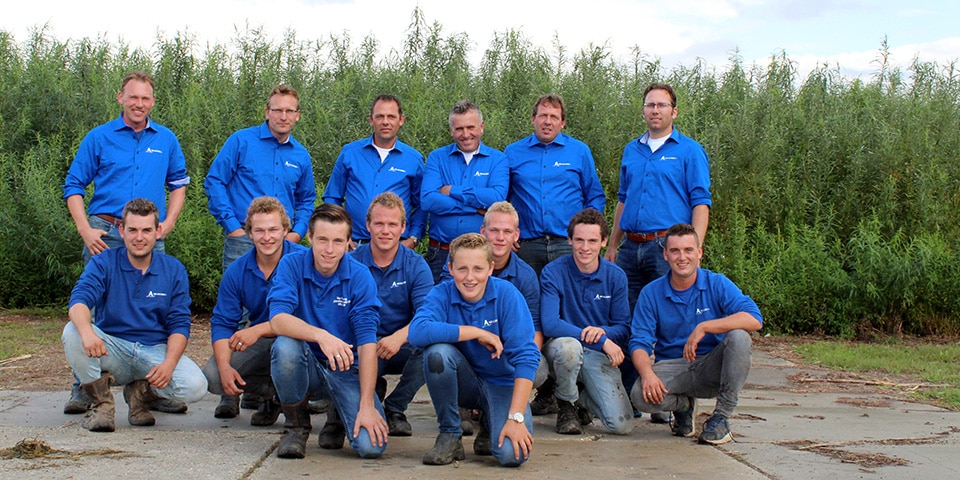
Van Aalsburg's team.
Infinite possibilities
"This kind of floating reed bed can be applied in ponds, inland lakes and even in some rivers. For example, as a breakwater or as nature in places where it is lacking. Van Aalsburg will start building a recreational island in January 2020 in the Langeraasche lakes entirely on a natural basis with willow reeds. "And with the permit for expansion in Hellouw in our pocket, we can take the steps necessary in terms of location and equipment to make our work even more efficient and better, thus maintaining our unique position in the market," Van Aalsburg concludes.
